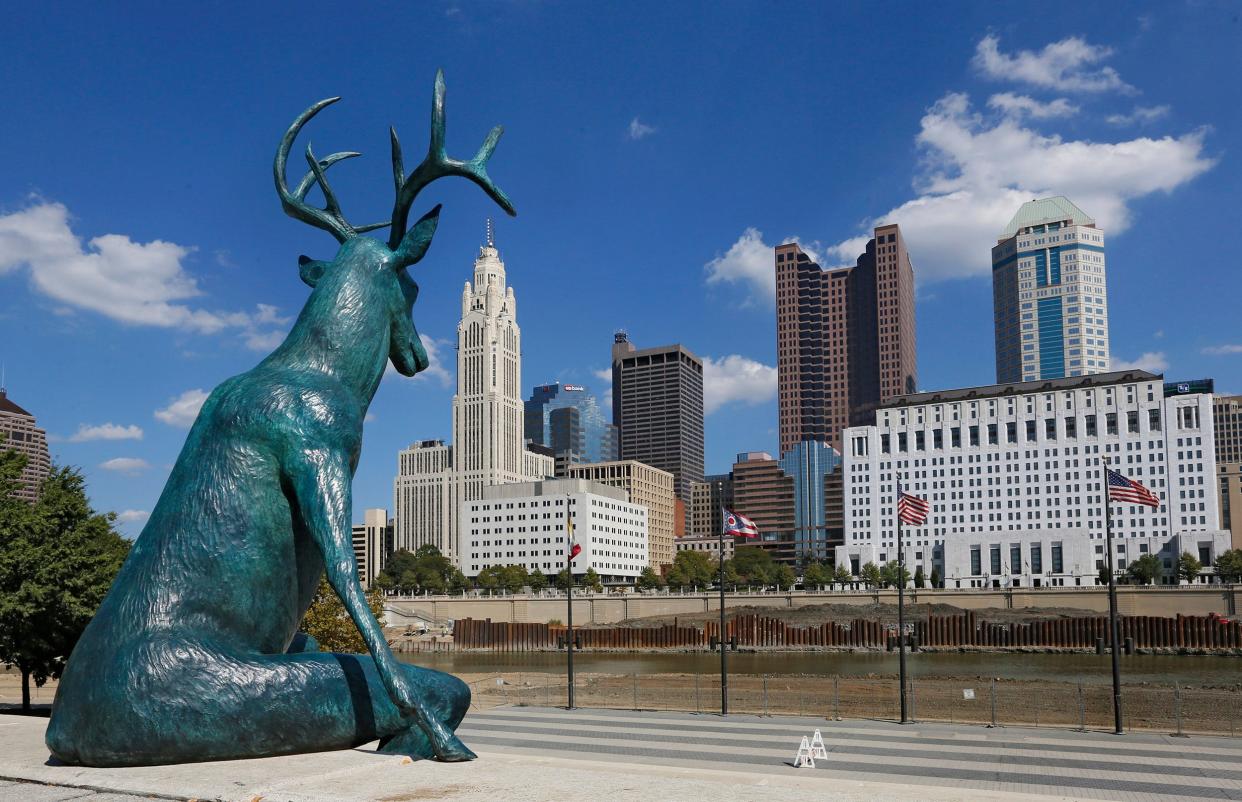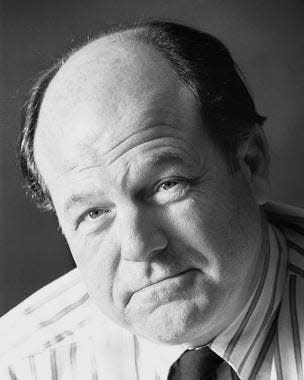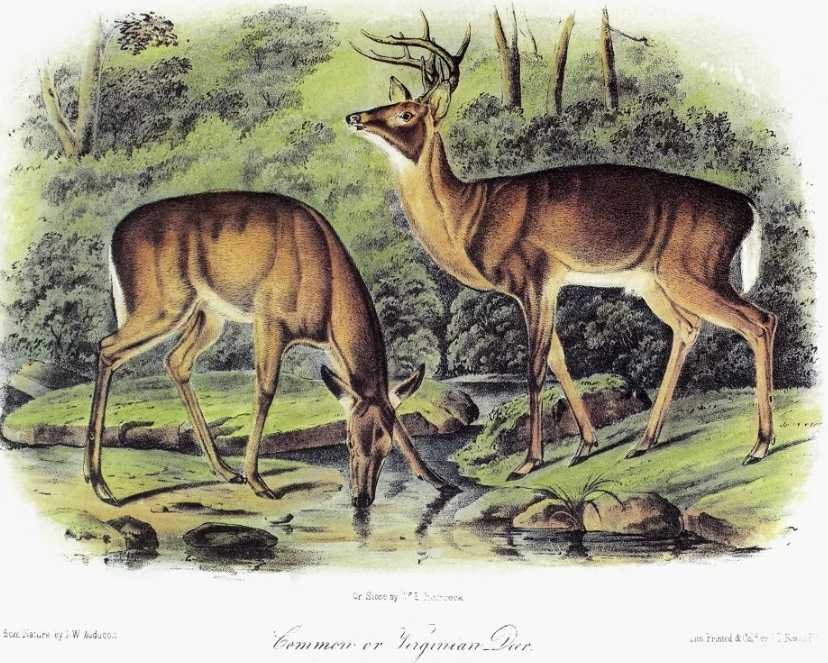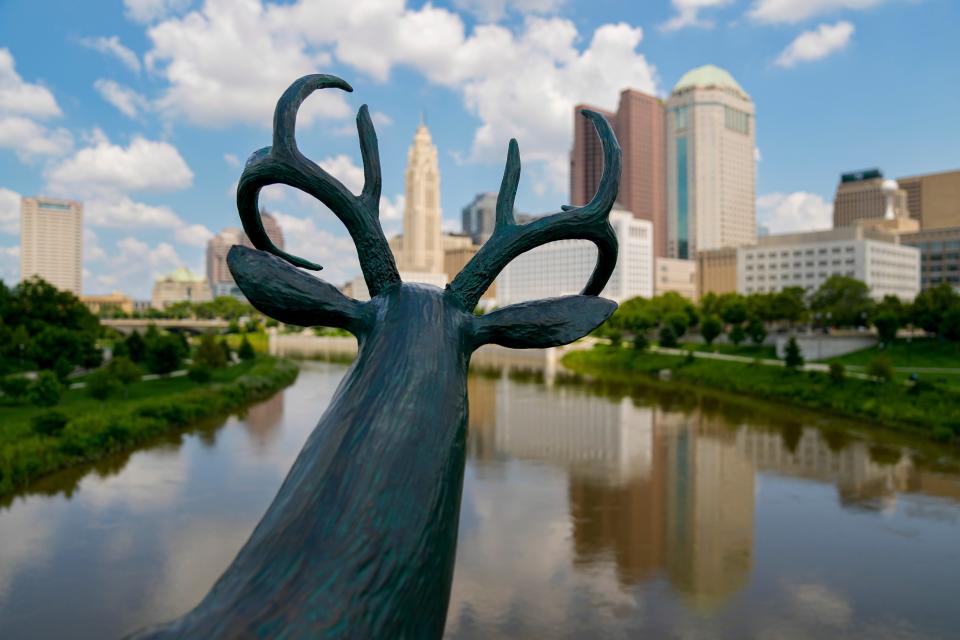Plentiful deer supplied Native Americans, Ohio frontiersmen and gave Scioto River its name

- Oops!Something went wrong.Please try again later.
Tellers of tales of the frontier days of the Ohio Country often called them the “Buckskin Men.” Clad in clothing made of deer hides, these men were often called the “long hunters” as well.
Moving across the Appalachians from the English colonies on the East Coast, these men were gone for months seeking beaver and other skins. Many of them, like Daniel Boone and Simon Kenton, were of Scots Irish origins. In the early 1700s, they were the spearpoint of English settlement in the Ohio Country, which was then occupied by French traders and their Native American allies.
Many of these men wore buckskins from time to time. But for most of the time they wore clothing made from homemade linsey-woolsey or blanket material. They only wore buckskins occasionally because deerskin has a tendency to stretch when wet and shrink as it dries, making it rather uncomfortable to the wearer on rainy days.
But frontier folks did wear buckskin clothing. They did because there was plenty of buckskin to be had.

People coming to the lands bordering the Ohio River in the years after the American Revolution were absolutely astonished by what they either got for free as a veterans benefit or were able to buy very inexpensively. It was a marvelous land of dense forests and plains of tall grass. Settlers from New England, where the primary farm crop was rocks, were amazed to find topsoil in Ohio that was four, five and even six feet deep.
The Ohio Country was home to wildlife in huge numbers. Herds of buffalo and elk crowded the land while flights of thousands of passenger pigeons sometimes blocked out the sun for hours a time. Whole families of beavers built immense beaver dams and lived within them.
And then there were the deer.

There were a lot of deer in Ohio, and that had been the case for a long, long time. The Scioto River is named for them. In an article for the journal of the then Ohio Historical Society [ now the Ohio History Connection ], historian August C. Mahr told the story.
“As to its provenience, the term Scioto is unmistakably Iroquoian, and in particular Wyandot. It is widely attested that the Wyandots called the river Scionto, although it was chiefly known as the Scioto, that is, among the white people. The fragmentary character of the river name is obvious from the fact that in Wyandot, och’sk’onto means ‘a deer’.”
“The name’, so writes the Rev. Mr. [David] Jones, [in 1772] ‘which the Shawanees give Siota [sic] has slipt my memory but it signifies ‘Hairy River.’ The Indians tell us that when they first came to live here, deers were so plenty, that in the vernal season, when they came to drink, the stream would be thick of hairs, hence they gave it the name.”

The immense herds of deer may have diminished by the time settlers arrived at the fork of the Scioto and Olentangy Rivers in the 1790s. But as an early history of central Ohio records, there were still a lot of deer in and around Columbus.
“Wild deer were often seen in the vicinity of the borough. They sometimes approached the corn fields near Franklinton, and loved to linger in the woods where now rise the monuments of Green Lawn Cemetery. When the first trees were cut down in Capitol Square, these mockeyed creatures came to browse upon their branches. Jonathan Neereamer, a Councilman of the borough, frequently shot deer in the forest which covered the territory now known as East Park Place [ Jefferson Avenue to Hamilton Avenue ] … In January, 1825, John Otstot, as he informs the writer, saw five deer feeding together near the old cemetery, on Livingston Avenue. These were the last deer seen by Mr. Otstot in the vicinity of Columbus. In the year 1835, he killed one in the Nine Mile Woods near Dublin. Mr. John Barr informed the writer that deer were seen between Alum Creek and the Big Walnut as late as 1845. On Nov. 12, 1855, Mr. William Neil saw two wild deer in his woods two miles north of the city [where The Ohio State University is today].”
“The hunting or killing of deer,” says [William T.] Martin, “was successfully practiced by candle or torchlight, at night, on the river. The deer, in warm weather, would come into the river after night, to eat a kind of water grass that grew in the stream, and the hunters, by taking a canoe, and a bright light in it, could let it float down the stream, and the light appeared to blind the deer until they could float near to them, and shoot them with ease.”
The technique came to be called “jacklighting” and was later destined to be illegal. But by then, most deer hunters had come to use firearms or bows to find deer during regulated hunting seasons.
Despite all of these changes, we still call the Deer River Scioto by the name Native Americans gave it.
Ed Lentz is a local historian and author who writes this weekly "As It Were" column for The Dispatch.
This article originally appeared on The Columbus Dispatch: Ohio's plentiful deer clothed 'Buckskin Men' and gave Scioto its name

